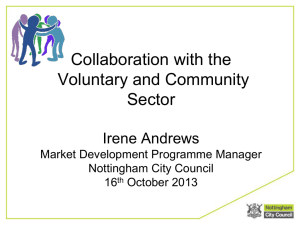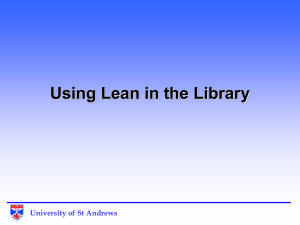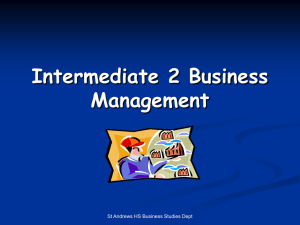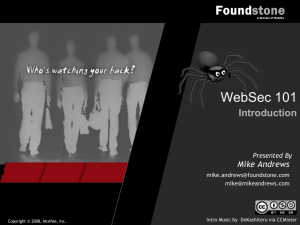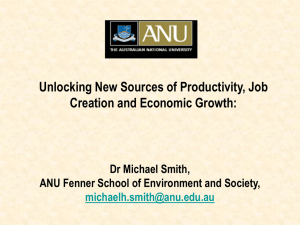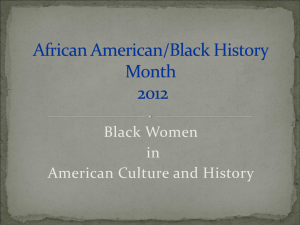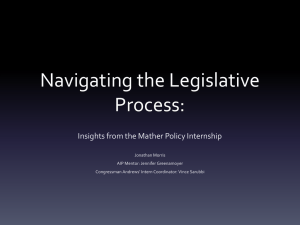BPR and other TLAs - University of St Andrews
advertisement
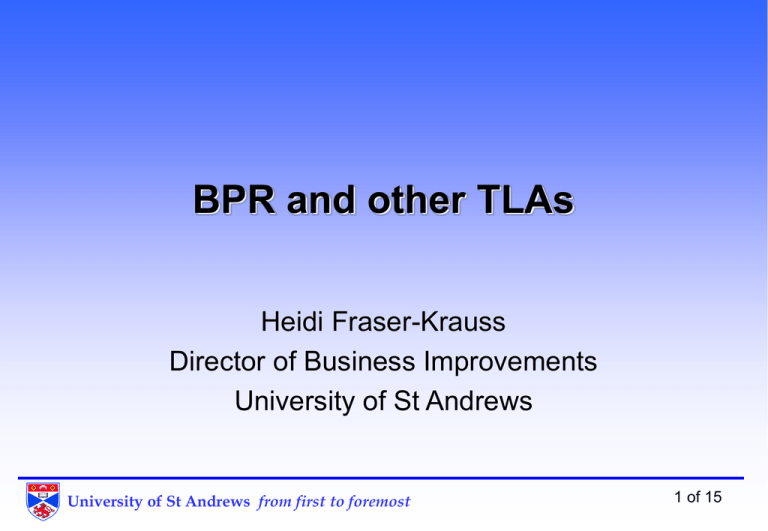
BPR and other TLAs Heidi Fraser-Krauss Director of Business Improvements University of St Andrews University of St Andrews from first to foremost 1 of 15 Outline • Brief introduction to the popular ‘BPR’ type techniques and the non IT tools they use. • How do BPR type initiatives impact on ‘IT’ • What we’ve done in St Andrews University of St Andrews from first to foremost 2 of 15 Commonly heard but what do they mean? • • • • • • • BPR BPI BPM TQM Six Sigma Agile Lean Business Process Improvement Business Process Management Total Quality Management University of St Andrews from first to foremost 3 of 15 Common concepts • All started life in manufacturing. • Purpose is to bring about change – provide a better service or product by improving quality. – to make the organisation more efficient by using less resource- be that, people, time , space, paperclips! University of St Andrews from first to foremost 4 of 15 Common Concepts • Understand what the customer needs – internal or external. • Understand the purpose of the processmeasure it, map it ! • Question why things are done the way they are. • Redesign the process based on the above. University of St Andrews from first to foremost 5 of 15 Common Tools • Process mapping ( Value stream mapping) • 5s – Sort, Set in order, Shine, Standardise , Sustain • Poka Yoke – mistake or fool proofing • Pareto charts 80/20 law • 5 Whys University of St Andrews from first to foremost 6 of 15 Impact on ‘IT’ • Get involved! • Remember that IT is not always the answer • You may have to re-think the services you offer. • Let the business lead -but guide them. • Agile is fine but its a software development method University of St Andrews from first to foremost 7 of 15 St Andrews Experience • Have been using Lean for 4 years • Have had significant successes – But it has been a struggle to get people to change the way they think about their work • Middle Managers are the biggest barriers to change • Senior management must champion it University of St Andrews from first to foremost 8 of 15 Final thought • All of these techniques seem like common sense squared but ‘Common sense is not so common’ Voltaire University of St Andrews from first to foremost 9 of 15 Six Sigma • Originated in Motorola • A six-sigma process is one in which 99.99966% of the products manufactured are statistically expected to be free of defects University of St Andrews from first to foremost 10 of 15 Business Process Reengineering What is reengineering? “Reengineering is the fundamental rethinking and radical redesign of business processes to achieve dramatic improvements in critical, contemporary measures of performance such as cost, quality, service and speed * * Hammer., Champy.J., (1993), Reengineering the Corporation: A Manifesto for Business Revolution., Harper Collins, London University of St Andrews from first to foremost 11 of 15 Lean • Originated in Toyota- Toyota Production System • Is not just about business process review but a methodology for changing organisational culture based on ‘systems thinking’. • Continuous improvement • Respect for people • Processes designed around what the customer wants University of St Andrews from first to foremost 12 of 15 Lean • Identifies waste in a process, efficiency gains come from eliminating waste. • Quality is designed in • Those who do the job are the ones in the best position to suggest changes to it. • Managers role is not ‘command and control’ but is to facilitate changes suggested by those doing the job. University of St Andrews from first to foremost 13 of 15 Agile • Software development methodology • Customer satisfaction by rapid, continuous delivery of useful software • Working software is delivered frequently (weeks rather than months) • Working software is the principal measure of progress • Even late changes in requirements are welcomed University of St Andrews from first to foremost 14 of 15 Agile principles • Close, daily cooperation between business people and developers • Face-to-face conversation is the best form of communication (co-location) • Projects are built around motivated individuals, who should be trusted • Continuous attention to technical excellence and good design • Simplicity • Self-organizing teams • Regular adaptation to changing circumstances University of St Andrews from first to foremost 15 of 15
